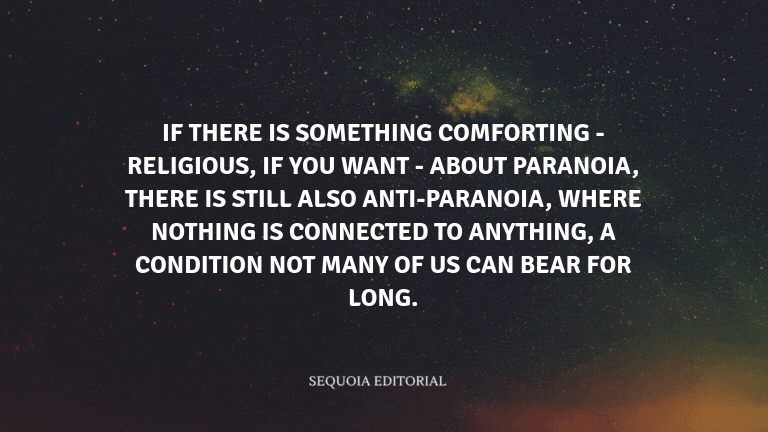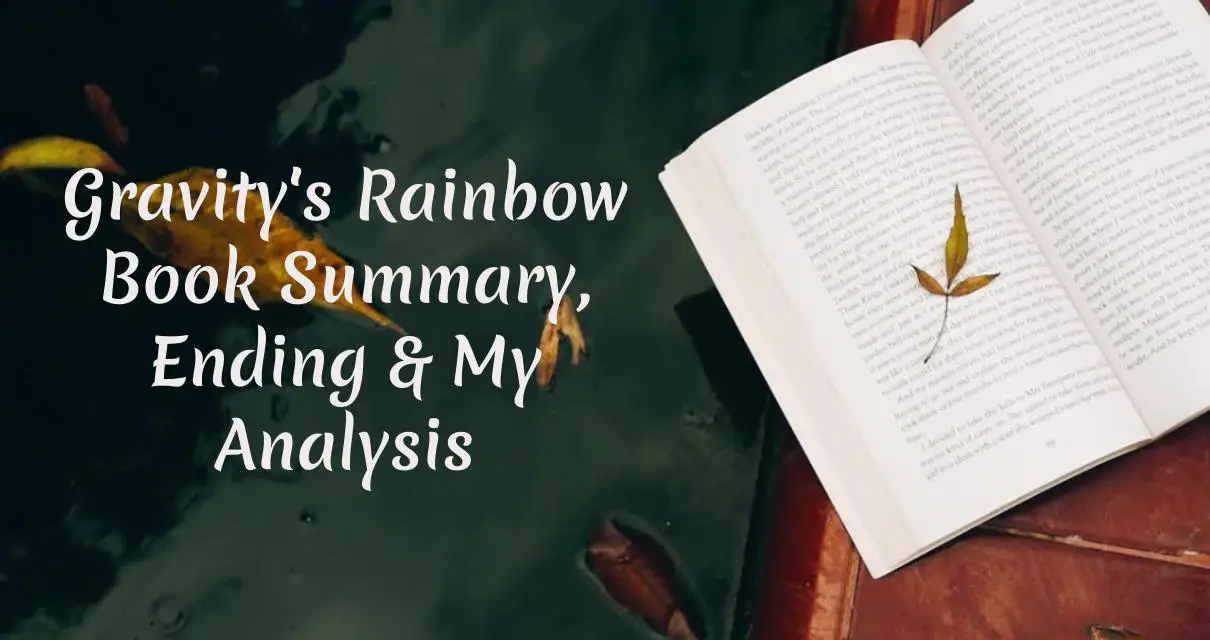Gravity's Rainbow is about the complicated and surreal postmodern adventures of American Lieutenant Tyrone Slothrop during World War II. The story delves into themes of paranoia, technology, and the impact of war on the human psyche. It is a challenging but rewarding narrative that weaves together science, history, and philosophy.
Table of Content
Gravity's Rainbow Book Summary
Lieutenant Tyrone Slothrop, stationed in London during World War II, discovers his sexual encounters predict the impact sites of V-2 rocket attacks. He becomes the focus of a secret military project led by British researcher Pointsman and his associate, Roger Mexico.
As Slothrop evades their grasp, the narrative expands, introducing a vast array of characters, each with their stories connected to the war and the rocket. We meet Enzian and Tchitcherine, whose paths intersect with Slothrop's in complicated ways.
The novel's structure is labyrinthine, reflecting the chaotic time it is set in. It explores various themes such as Pavlovian conditioning, the occult, and technology's dehumanizing influence. The characters' experiences are surreal, often verging on the absurd.
Slothrop's journey takes him through Europe, encountering bizarre situations and people, from a sentient lightbulb to a pirate broadcast by a mysterious figure known as "The Counterforce." His quest for the Rocket's meaning becomes entangled with myth and history.
Meanwhile, Roger Mexico and his lover Jessica Swanlake grapple with their own personal drama, a microcosm of the larger war's impact on individuals. Their story intersects with Slothrop's, adding layers to the novel's intricate web.
Another character, Franz Pökler, is central to the novel's themes of control and unpredictability. His own experiences with the V-2 rocket lead him to question the nature of reality and his role in the war.
The narrative shifts between the past and the present, often with dreamlike logic. It's a world where paranoia reigns, and the search for meaning becomes a journey through the absurd.
Enzian and his companions, part of a secret Schwarzkommando group, reflect on their place in the war and the moral implications of their actions. Their musings provide a counterpoint to the more technological aspects of the conflict.
The novel's structure is a complex tapestry, with threads of history, science, and the personal woven together. It's a puzzle that defies easy interpretation, demanding the reader's full attention and engagement.
As the narrative progresses, the true nature of the Rocket and its impact on the world begins to unravel. The characters' fates become intertwined, leading to confrontations and revelations both profound and absurd.
Throughout the chaos, the underlying theme of the book emerges: the quest for order in a world teetering on the brink of destruction. The search for "Gravity's Rainbow" becomes a metaphor for the elusive harmony the characters seek.
The novel culminates in a celebratory event known as The White Visitation, where many of the characters come together. The gathering is both festive and ominous, as it signals the impending end of the war and the uncertain future that awaits.
Ultimately, the novel's conclusion is open to interpretation, mirroring the enigmatic nature of the narrative itself. It offers no easy resolutions but leaves the reader with a sense of the profound and the absurd that permeates the human experience.
Gravity's Rainbow Quotes
- If there is something comforting - religious, if you want - about paranoia, there is still also anti-paranoia, where nothing is connected to anything, a condition not many of us can bear for long.

Gravity's Rainbow Ending Explained
At the end of Gravity's Rainbow, the intricate plotlines converge and diverge in a final, enigmatic dance. The secret of the Rocket's impact sites and Slothrop's predicament are not fully resolved, leaving many questions unanswered.
Some characters seem to find closure, while others are left to the vagaries of a world in flux. The novel's final scenes are a mix of celebration and reflection, echoing the juxtaposition of themes that have run throughout the story.
Overall, the book's conclusion is a testament to the complexity of human experience and the search for meaning in a universe that often seems designed to confound us.
Characters in book Gravity's Rainbow
- Lieutenant Tyrone Slothrop: The novel's protagonist, an American Army lieutenant who is deeply connected to the mysterious V-2 rocket.
- Roger Mexico: A British soldier and statistician, friend of Slothrop and part of the novel's sub-plot involving his lover Jessica Swanlake.
- Pointsman: A British researcher who studies Pavlovian conditioning and is involved in a complex plot surrounding Slothrop.
- Thomas Gwenhidwy: A Welsh poet who is also part of the Pointsman group and the creator of the mysterious "Gwenhidwy's Lament."
- Franz Pökler: A German soldier who has defected to the British and who has information about the V-2 rocket.
- Enzian and Tchitcherine: Two German characters with interconnected stories, Enzian is a member of a secretive group and Tchitcherine is a Russian intelligence officer with a mechanical arm.
- Katje Borgesius: A Dutch double agent who has relationships with both Slothrop and Tchitcherine.
- Jessica Swanlake: Roger Mexico's lover, whose history and connections are revealed throughout the novel.
- Byron the Bulb: A lightbulb that has gained sentience and has a philosophical discussion with Roger Mexico.
Key Lessons
- Embrace the Unpredictable: Life is full of uncertainties, and trying to control every aspect can lead to paranoia and anxiety. Embracing the chaos can lead to a more liberating existence.
- Question Authority: In times of war and crisis, blind obedience can have dire consequences. It's essential to question those in power and the systems they represent.
- The Impact of Technology: Technological advancements can both liberate and enslave humanity. Understanding and guiding the use of technology is crucial for shaping the future.
- Look Beyond Appearances: People and situations are often more complex than they seem at first glance. Taking the time to look deeper can reveal hidden truths and unexpected connections.
- Seek Meaning: The search for meaning is a fundamental part of the human experience. It can lead to both profound understanding and existential despair, but the quest itself is crucial.
My Personal Opinion
Is Gravity's Rainbow worth Reading? Absolutely yes, I found it to be an incredibly challenging and thought-provoking work of literature. The novel's complexity is both its strength and its barrier to some readers.
I was impressed by the depth and scope of Pynchon's vision, and his ability to weave together so many disparate elements into a coherent whole. At times, the book can be overwhelming, and its narrative style requires a high level of engagement, but the rewards for the diligent reader are immense.
I would say that this book is not for everyone. It demands patience, an open mind, and a willingness to accept its more absurd and surreal elements. Readers who enjoy postmodern literature and are looking for a challenge will find Gravity's Rainbow to be a deeply rewarding experience.

